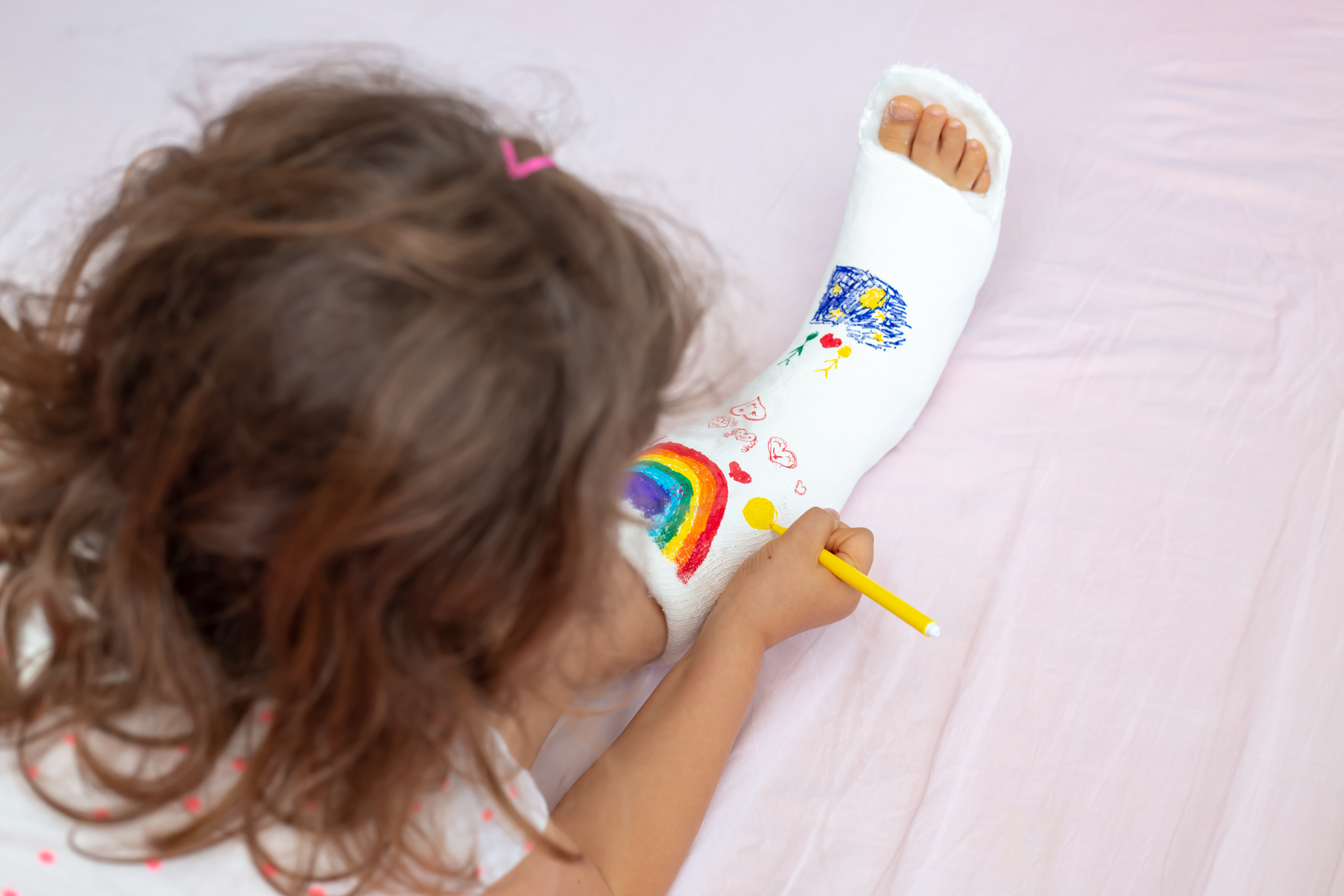Congenital Pseudarthrosis of the Tibia Clinical Trial
The International Center for Limb Lengthening is currently enrolling children with Congenital Pseudarthrosis of the Tibia (CPT) for participation in a clinical trial with a cell therapy-based bone graft. For more information, please visit https://clinicaltrials.gov/ct2/show/NCT05693558. If you have questions, please email us at riaoresearch@lifebridgehealth.org. Parents and guardians of children with CPT being followed at the International Center for Limb Lengthening may also speak to their child’s orthopedic surgeon about participating in this clinical trial.
Clinical Trial
This clinical trial is using a new type of cell therapy-based bone graft, called NVD-003, which will be used during the orthopedic surgery and aims to support healing of the CPT fracture.
Condition and Treatment Background
Congenital pseudarthrosis of the tibia (CPT) is a shin bone fracture in children that has not healed. It normally presents before a child turns two years old. Typically, the child gets a shin bone fracture that either happens spontaneously, or results from when the child experiences a minor trauma, and the fracture does not heal. It is a rare condition that occurs in 1 out of every 250,000 children.
The primary treatment goal of congenital pseudarthrosis of the tibia is to achieve union of the shin bone (tibia) and to maintain that union. Treatment also addresses the resulting limb length discrepancies and bone deformities. To treat congenital pseudarthrosis of the tibia, the International Center for Limb Lengthening has a combined multimodal, comprehensive cross-union treatment program that addresses both biological and mechanical issues.
With this technique, the broken bones are stabilized with stainless steel or titanium devices. Healthy bone is harvested from the pelvis which is then placed in between and around the fractured bones, generating a large cross-sectional surface area for optimal healing.
Besides the fact that the pelvis of small children only contains limited availability of bone material, the harvesting of the bone at the pelvis might introduce some important limitations like prolonged surgery time and accompanied risks and potential complications at the pelvis after the surgery including pain, nerve damage, bleeding, bruises and infection.
NVD-003: An Autologous Osteogenic Bone Graft
NVD-003 is a type of bone-forming (also called osteogenic) graft, intended to replace the bone harvested at the pelvis. This graft is developed from stem cells that originate from fat (e.g., belly fat) from the individual themselves. During the production of this graft, the stem cells are being stimulated to become bone forming cells after which it will be enriched with calcium and other minerals that are important during the bone healing process. The final product, NVD-003, produced from the participant’s own fat, will be implanted at his/her fractured leg and is therefore called an autologous graft.
To Learn More
If you would like to obtain more information about enrolling your child with CPT in this clinical trial with this autologous osteogenic bone graft NVD-003, please visit https://clinicaltrials.gov/ct2/show/NCT05693558. If you have questions, please email us at riaoresearch@lifebridgehealth.org. Parents and guardians of children being treated at the International Center for Limb Lengthening may also speak to their orthopedic surgeon about participating in this clinical trial.
